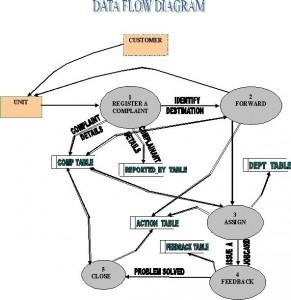The “The High School “website is a website developed using Three tier architecture having Data Access Layer termed as DAL,Bisuness Logic layer termed as BLL,Presentation Layer termed as UI.BLL is also called as Business Access Layer and Presentation Layer is also known as User interface. The layer will be shown to the end user is called as Presentation Layer. Data Access layer contains the functions that will connect to the database to fetch the Data from the database to the website. Business Logic layer contains the logic behind the implementation. In addition to this website was developed is using all the available concepts of dot net coding and html such as Master Pages, User controls, Style sheets etc to present a better and neat web application to the students .Standard Stored procedures have been used to communicate will the Database both to insert data or to get data instead of writing the inline queries which is a bad practice. Menu item has been used in this website which will be redirecting each user to different pages as per the provided access
This website development have been split up into two modules known as
- Administration Module
- Student Module
Administration Module Design:
This module was mainly intended to insert or update the data into the school database related to student’s profiles, events, learning topics, quiz questions online exams etc.For this module to be accessed we have created a role in the “The High School” called as Administrator .The Administrator is the one who take cares of the complete website maintenance. We assumed that there will be only one Administrator for this website.
Following are the accessible points for the administrator.
Home: The administrator can view the Home page where in which he can understand what actually this site is meant for.
Profile: Create a new profile and insert it into the data base. For example inserting a student profile into the database such that he can access “The School website”
Events: This page is used to create or insert new event into the high school data base that will occur in future in the school which will be visible to the students from their login.
Quiz: This page is used to insert Quiz questions into the High School Database for each course such that the students can write online examinations and test themselves how far they were able to grab the concepts.
Logout: Used to logout of the application.
Student Module Design:
This module was developed for the students to use. This module facilitates the student to register himself into the “The High School” website, View his profile update his profile when felt necessary. He can also study the subject online; participate in some online examinations available in the Website to analyze his stuff. The students can also get their registration done with the help of administrator. Administrator from his login can create the students profile when requested.
Following are the accessible points for the Students.
Home: The student can view the Home page where in which he can understand what actually this site is meant for.
Profile: The students who have registered with the website can view their profiles in their own login. If he feels that his profile should be changed then he can do the same.
Events: This page is used to view the events that are happening or happened in their school when given the from data and to date for the events.
Learn: This page is used for eLearning of the students where they can study any topic that has been dumped into the site and enhance their knowledge.
Quiz: This page is used to write some online examinations for the students and submit to get their results, which will be used to test themselves.
Logout: Used to logout of the application.
In addition to this, we have implemented the Master pages such as menu.Master, Learning.Master, Title. Master etc.
Style sheets have been created and have been referenced in each and every so as to follow same look and feel throughout the website.
Each and every page implementation and results will be discussed in the coming chapter known as Implementation and Results.

